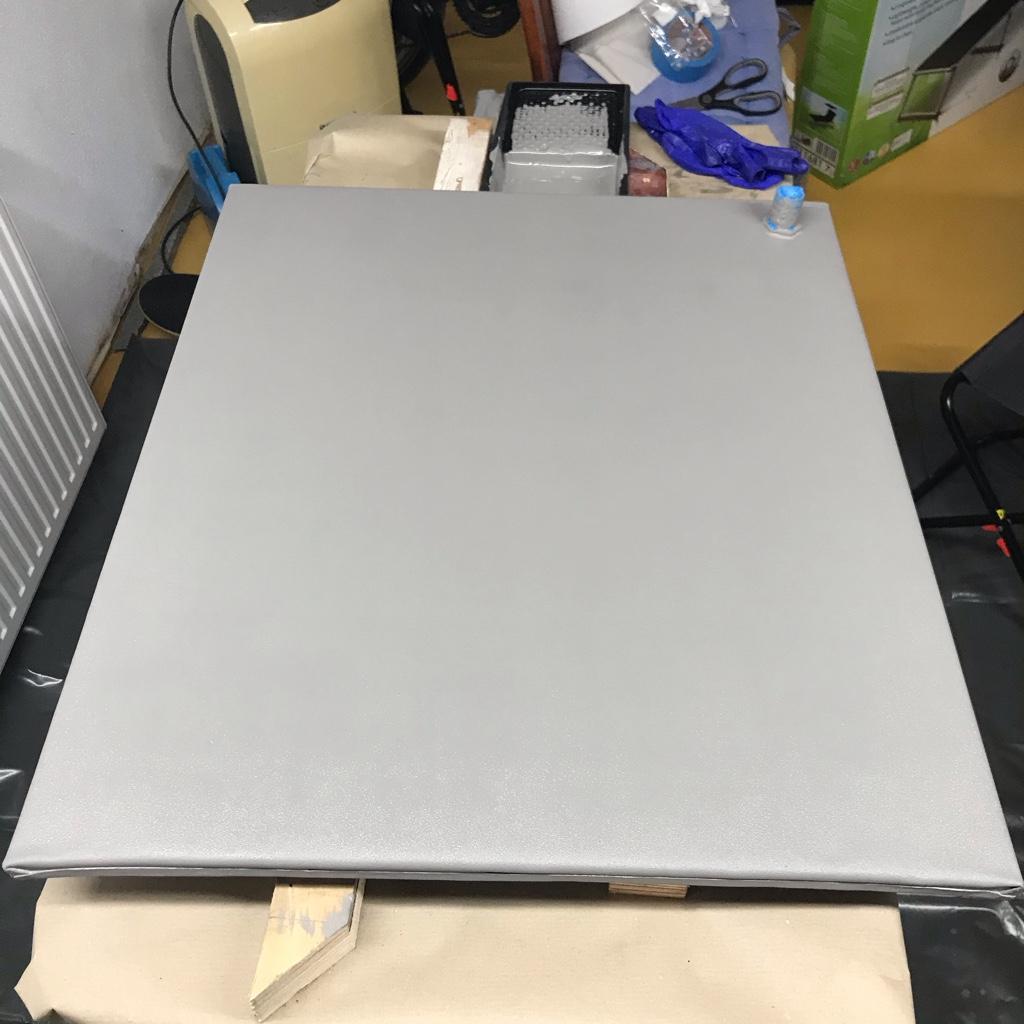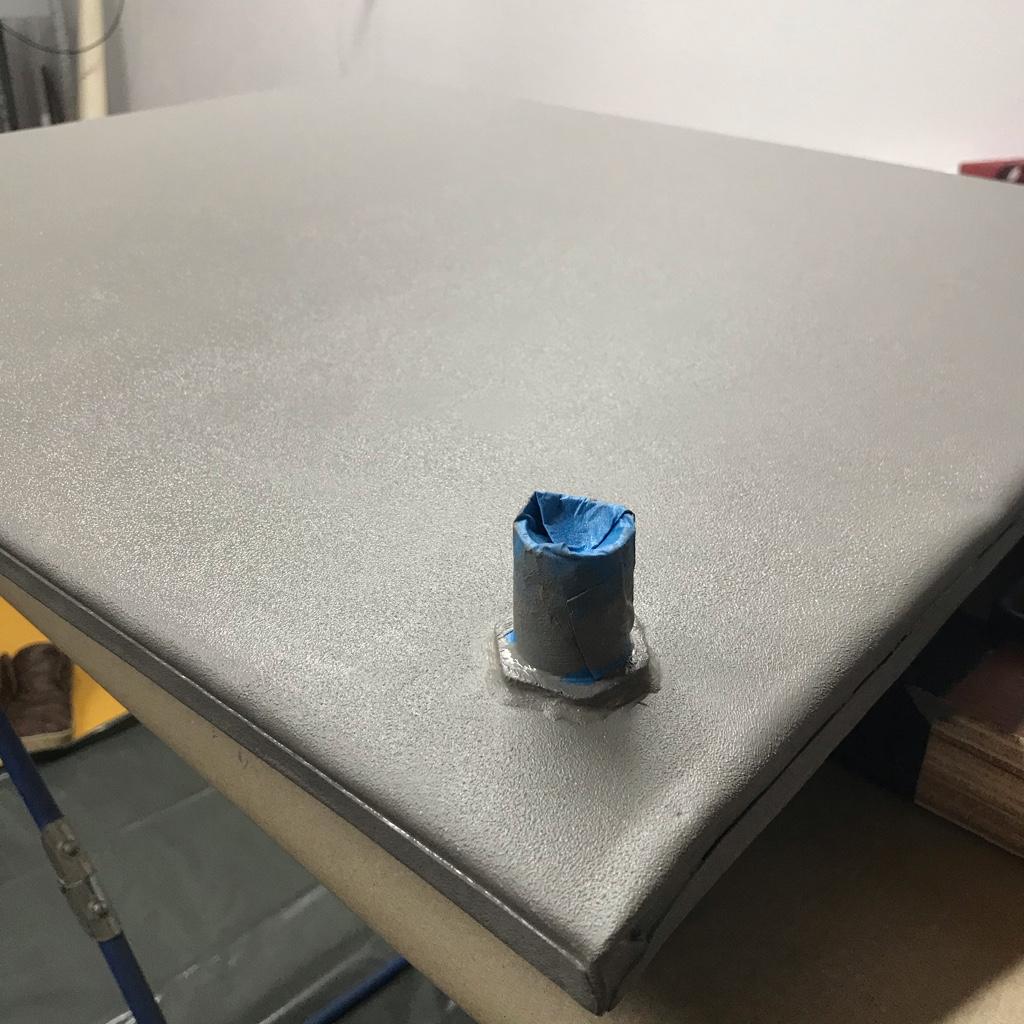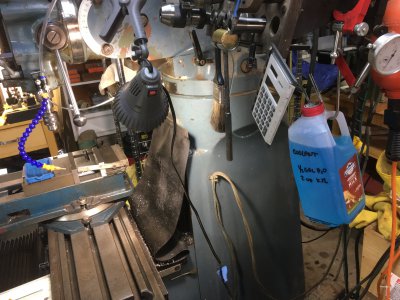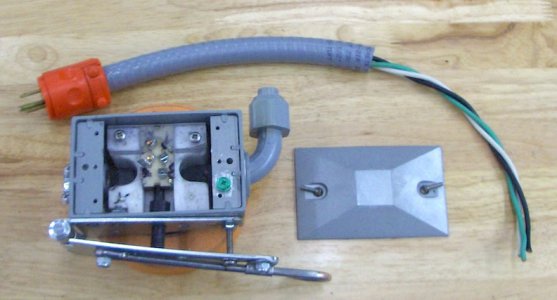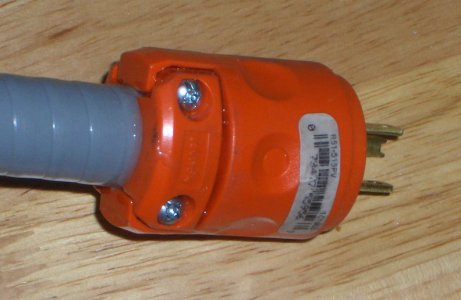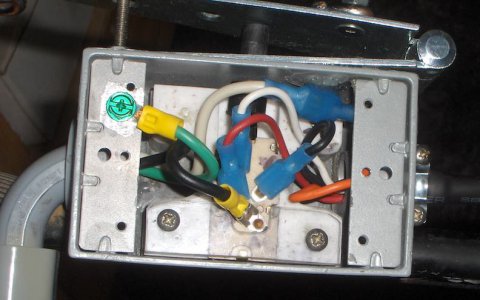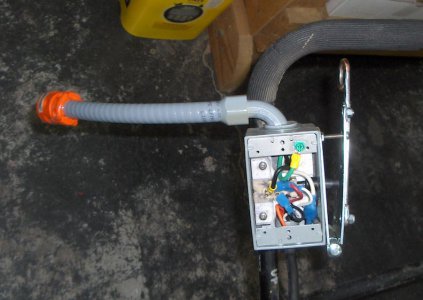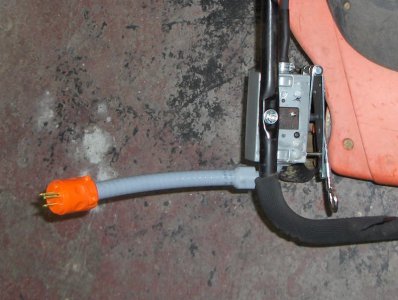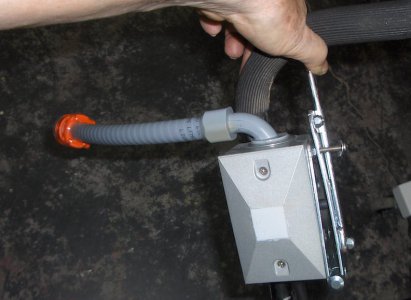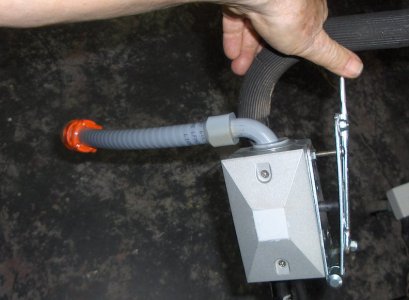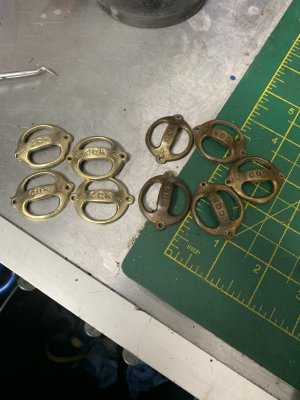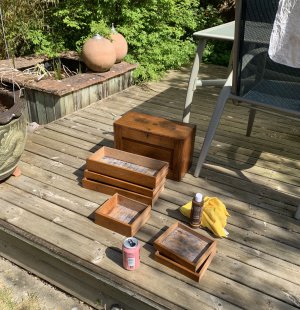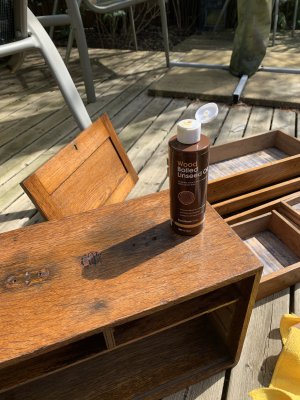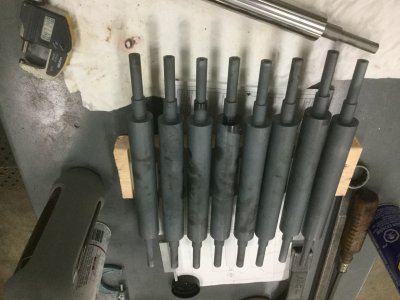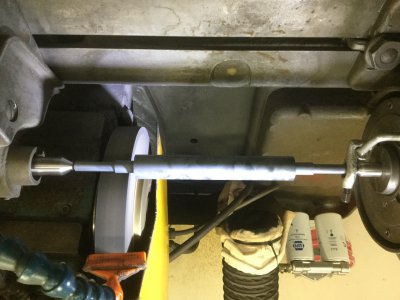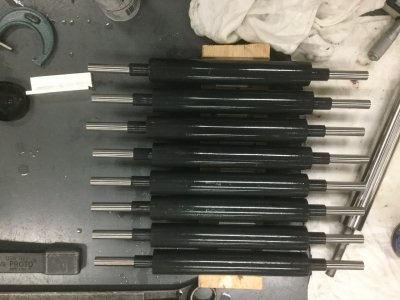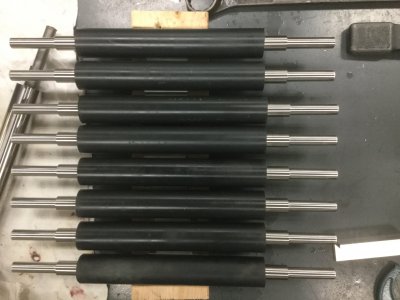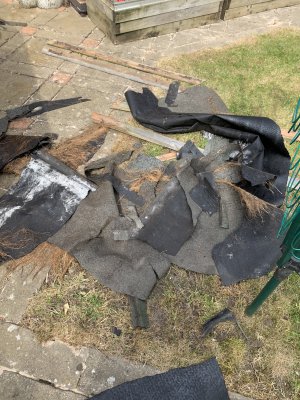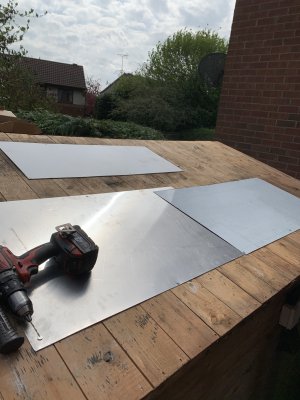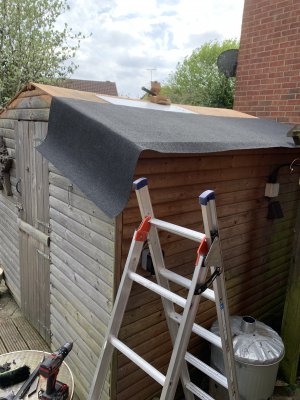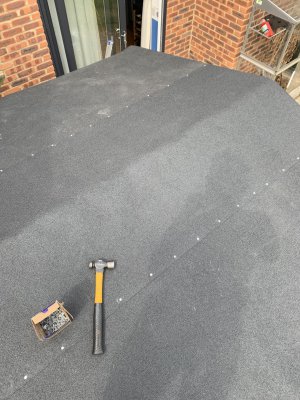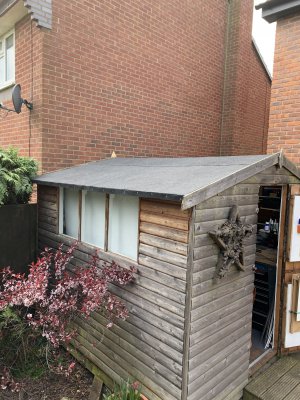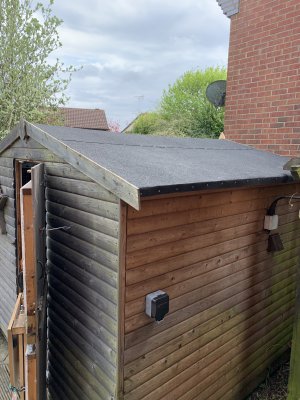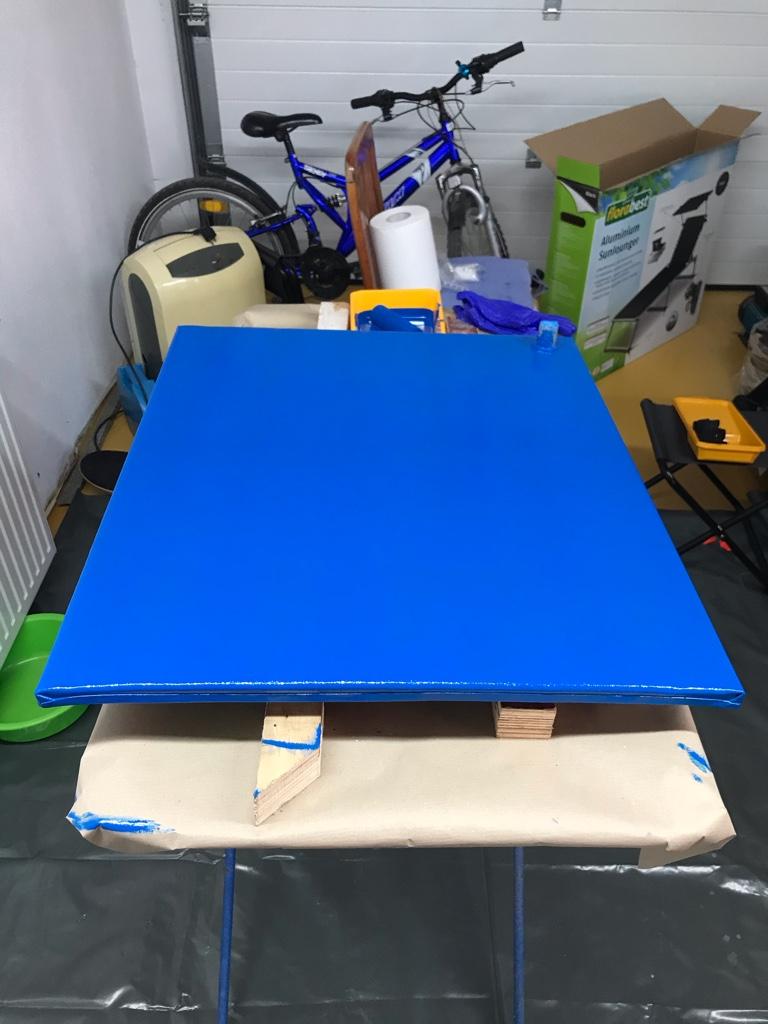- Joined
- Nov 23, 2014
- Messages
- 2,608
POTD was yet more Tormach enclosure work. More than a day's work; got some end panels in place.
My original plan was to make the panels out of 1/4" thick UHMW Polyethylene. It's about $60 a sheet at Menards, so not too pricey. However, holy crap did it weigh something (I'm guessing 40 lbs.)! Problem was the panels would lift out of the way, so weight was a consideration. So, change in plans to something lighter. The meat of the panels aren't structural, so went with some 0.090" white plastic sheeting from Menards and framed them with suspended ceiling tile track. The panels would go from around 25 lbs. to under 5 lbs.
Started with the guides which were made from 1 1/4" thick UHMW polyethylene (what I had on hand). First made a mock-up from wood.
Prototyped the panel guides with a chunk of 2x4. Used a 3/4" ball end mill to cut a dado of sorts for fitting to the tubing.
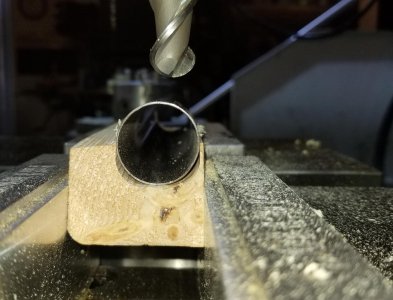
Flipped and cut a dado for the panel itself.
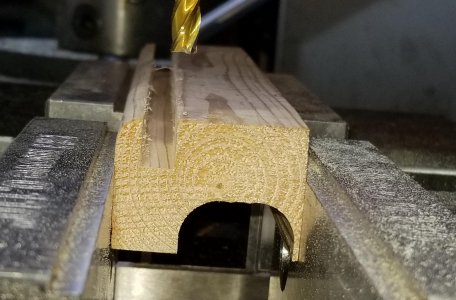
Prototype set in place. Plan was to screw the guide to the vertical tubing with the lift-panels running in the dado.
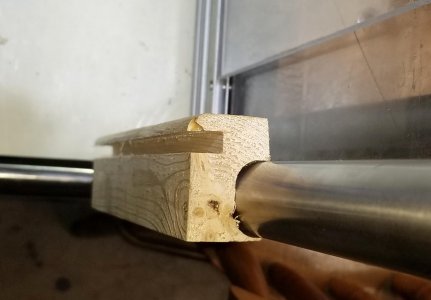
Set up on the Tormach for machining the polyethylene. The guides are 24" long, Tormach's travel about 17" so needed to do it in two passes.
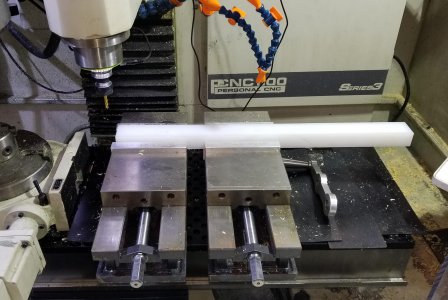
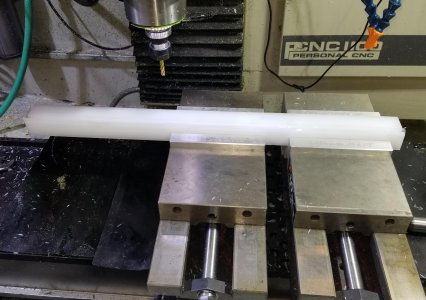
Lots of chips everywhere, sure gonna like having a finished enclosure!
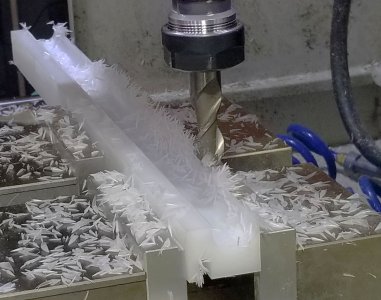
Drilled and countersunk holes for self-drilling screws for attaching to the enclosure vertical tubing.
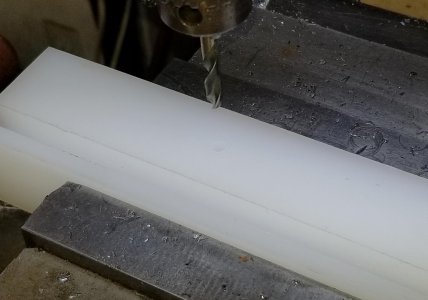
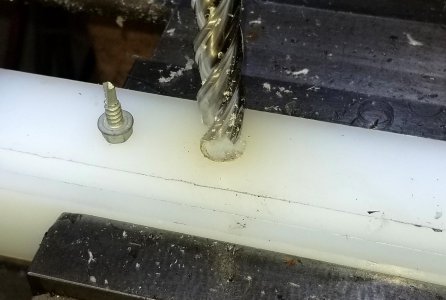
Didn't take any pictures of it, but made the end panels from plastic sheeting from Menards ($25 for a 4' x 8' sheet about 0.090" thick). The panels are framed with edge track and runners for a suspended ceiling; pop riveted in place. Jury is still out if I'll put windows in or not, which means I probably will. . . .
LH side panel in place. Going to adjust the height as I'm 6' and miscalculated my ceiling clearance a little.
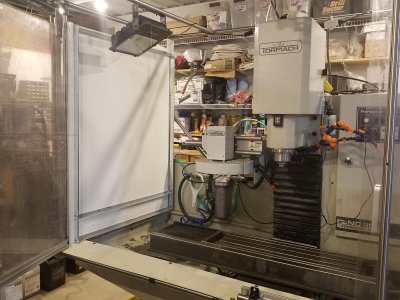
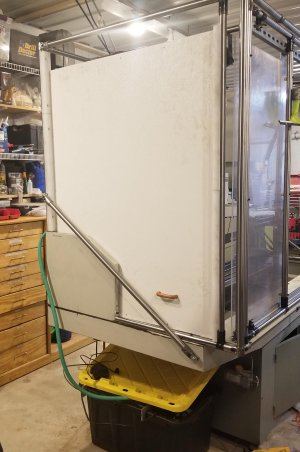
Need to come up with a catch for the door at the open position.
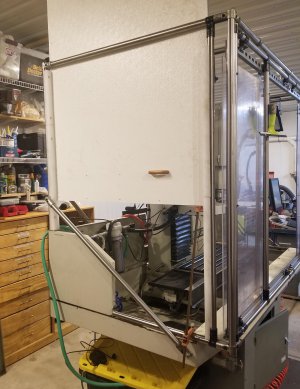
RH side panel, gives a 6' 3" "duck under".
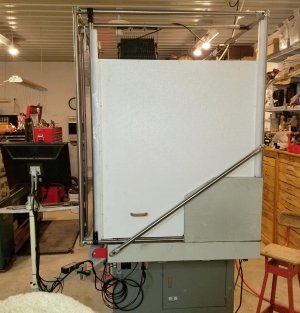
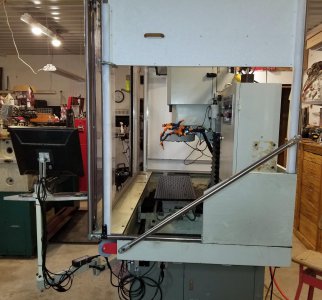
Polyethylene guide screwed to the vertical tubing. Side panels slide in the dado.
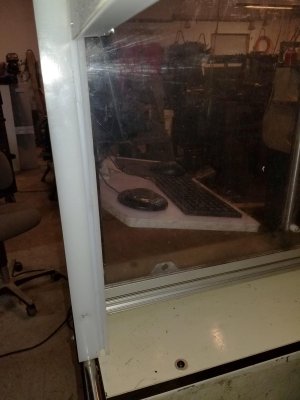
Still lots more work to do. Need to make some close-out panels for the areas above the end panels and front doors so all of the coolant is managed back into the chip pan. Also need to make a back and top for the enclosure and mount the Mistaway coolant air filter. Also, probably the windows on the end panels (have 1/4" polycarbonate panels from the original owners enclosure).
Thanks for looking, Bruce
My original plan was to make the panels out of 1/4" thick UHMW Polyethylene. It's about $60 a sheet at Menards, so not too pricey. However, holy crap did it weigh something (I'm guessing 40 lbs.)! Problem was the panels would lift out of the way, so weight was a consideration. So, change in plans to something lighter. The meat of the panels aren't structural, so went with some 0.090" white plastic sheeting from Menards and framed them with suspended ceiling tile track. The panels would go from around 25 lbs. to under 5 lbs.
Started with the guides which were made from 1 1/4" thick UHMW polyethylene (what I had on hand). First made a mock-up from wood.
Prototyped the panel guides with a chunk of 2x4. Used a 3/4" ball end mill to cut a dado of sorts for fitting to the tubing.

Flipped and cut a dado for the panel itself.

Prototype set in place. Plan was to screw the guide to the vertical tubing with the lift-panels running in the dado.

Set up on the Tormach for machining the polyethylene. The guides are 24" long, Tormach's travel about 17" so needed to do it in two passes.


Lots of chips everywhere, sure gonna like having a finished enclosure!

Drilled and countersunk holes for self-drilling screws for attaching to the enclosure vertical tubing.


Didn't take any pictures of it, but made the end panels from plastic sheeting from Menards ($25 for a 4' x 8' sheet about 0.090" thick). The panels are framed with edge track and runners for a suspended ceiling; pop riveted in place. Jury is still out if I'll put windows in or not, which means I probably will. . . .
LH side panel in place. Going to adjust the height as I'm 6' and miscalculated my ceiling clearance a little.


Need to come up with a catch for the door at the open position.

RH side panel, gives a 6' 3" "duck under".


Polyethylene guide screwed to the vertical tubing. Side panels slide in the dado.

Still lots more work to do. Need to make some close-out panels for the areas above the end panels and front doors so all of the coolant is managed back into the chip pan. Also need to make a back and top for the enclosure and mount the Mistaway coolant air filter. Also, probably the windows on the end panels (have 1/4" polycarbonate panels from the original owners enclosure).
Thanks for looking, Bruce


